A Saugatuck woman became one of the first people in the country to receive the latest treatment for a difficult-to-reach aneurysm.
A new technique called cardiac pacing allowed Justin Singer, MD, the director of vascular neurosurgery at Spectrum Health, to place clips blocking blood flow to the weak spot that lay in an artery deep in Janis Huyge’s brain.
“You’re a trailblazer,” Dr. Singer told Huyge when she visited him two weeks after the surgery. “This is a newer technique and something that hasn’t been done here before.”
“Amazing,” said Huyge, a 67-year-old who retired from the real estate and mortgage business. On the top of her head, her reddish brown hair parted wide to show the surgical scar across the top of her skull.
The aneurysm first made its presence known to Huyge one day in December as she stood at her counter cutting an apple. With no warning or obvious reason, she fell.
“I remember hitting the floor,” she said. “I hit the right side of my head and my right arm.”
She lay on the floor, wondering what had happened. And then she got up and drove herself to a local hospital emergency room. A CT scan showed an aneurysm—a thin or weak spot in an artery that balloons or bulges out. It can put pressure on nerves or brain tissue, or it can burst, spilling blood into the brain.
The aneurysm experience was especially frightening for Huyge because her mother died of an abdominal aortic aneurysm at age 76.
Planning the surgery
An ambulance transferred her to Spectrum Health Butterworth Hospital, where further tests revealed two aneurysms. The one in the back of her brain—a small, 3-millimeter bulge in the basilar artery—would be the most challenging, Dr. Singer said.
As he described his approach to the aneurysm, Dr. Singer explained, “I always equate what I do with plumbing.”
Just as a plumber shuts off the water supply to a burst pipe before repairing it, a neurosurgeon controls the blood flow to the aneurysm.
“In other locations, it’s easy to do that,” he said. “I’m able to put a clip lower down on the artery to help control the blood flow.
“The challenging thing with that aneurysm is there is no place for us to get good control. (The basilar artery) is a very important artery and has very small arteries that come off of it that you could put at risk of injury if you were to close it off.”
Sometimes, the surgeon uses medication that can slow the blood pressure significantly.
But in Huyge’s surgery, performed Jan. 9, Dr. Singer turned to cardiac pacing. An anesthesiologist placed a wire through her neck and into her heart’s right ventricle, so he could send electrical impulses to speed her heart rate.
“The idea is we make the heart rate really fast, so it doesn’t have the opportunity to pump blood as effectively as it usually does,” Dr. Singer said.
By design, her blood pressure and pulse temporarily dropped close to zero. The aneurysm, with the reduced blood flow, became softer. This made it easier for Dr. Singer to place clips on her artery to block off the aneurysm.
“Smaller aneurysms are pretty hard to put these big clips on, particularly if they are very full,” he added.
Fortunately, Huyge’s aneurysm did not bleed during the surgery. But if it had, the cardiac pacing would have been helpful in controlling the bleeding as Dr. Singer closed off the aneurysm.
“So, it does two things,” he said. “It helps us if things get difficult. And it also makes things easier and a little safer with respect to helping to close off an aneurysm.”
In some cases, a basilar aneurysm may be treated with a catheterization procedure, placing coils through a tube that is fed into the artery from the wrist.
“This aneurysm was not great for that (approach) because the neck of the aneurysm was a little bit wider, which can be a bit more difficult to treat from the inside,” Dr. Singer said.
Also, he believes clipping the aneurysm with cardiac pacing significantly lowers the risk that the aneurysm will recur.
During the operation, he also placed clips on the other aneurysm, in her left middle cerebral artery.
Aneurysms gone
Huyge recovered from the operation at Butterworth Hospital and then spent two weeks at the Inpatient Rehabilitation Center at Spectrum Health Blodgett Hospital for physical, speech and occupational therapy.
On her last day at the center, she went with her brother, Rick Miedema, for a follow-up visit with Dr. Singer. Physician assistant Leah Lyons, PA-C, removed about 40 staples from the incision on her head.
She felt good, Huyge said. She had a headache, but no dizziness, numbness or balance issues.
Dr. Singer showed her a video clip of the surgery, with images of the aneurysm before and after it was clipped.
“It went exactly as we wanted it to,” he said. “The desired blood pressure was reached easily. Both the aneurysms are gone, which is exactly what we want to see.
“And you look fantastic.”
When she returned to her home in Saugatuck, Michigan, Huyge’s cats, Max and Pyrra, were eager to see her.
She plans to continue seeing Dr. Singer for monitoring. As for the innovative surgical technique, she’s glad it was available to treat her aneurysm.
“I think it’s pretty exciting,” she said.
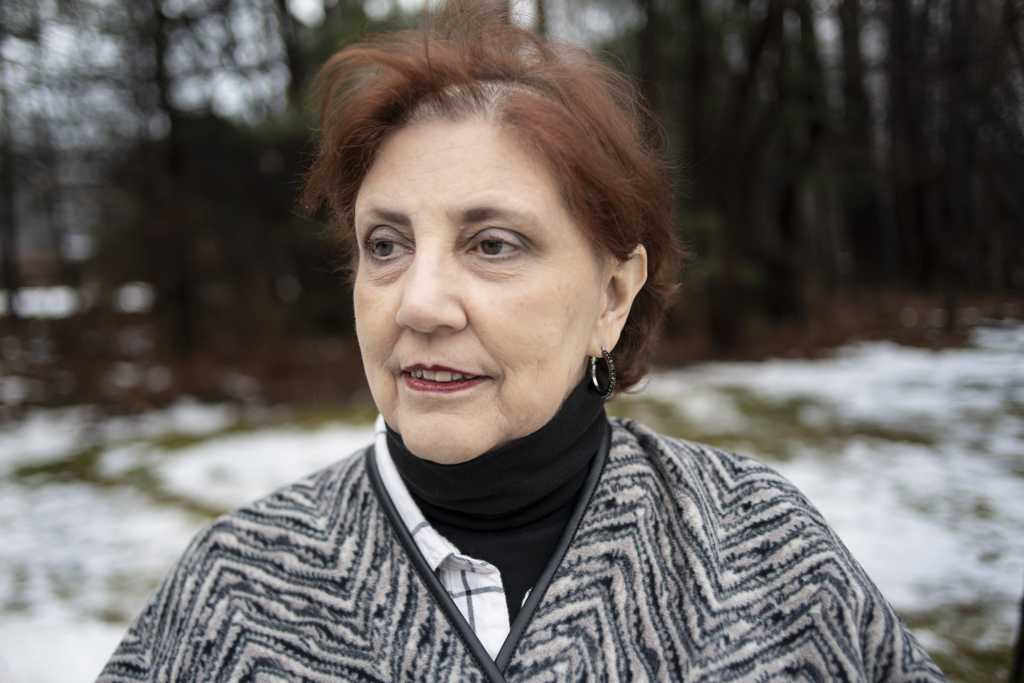
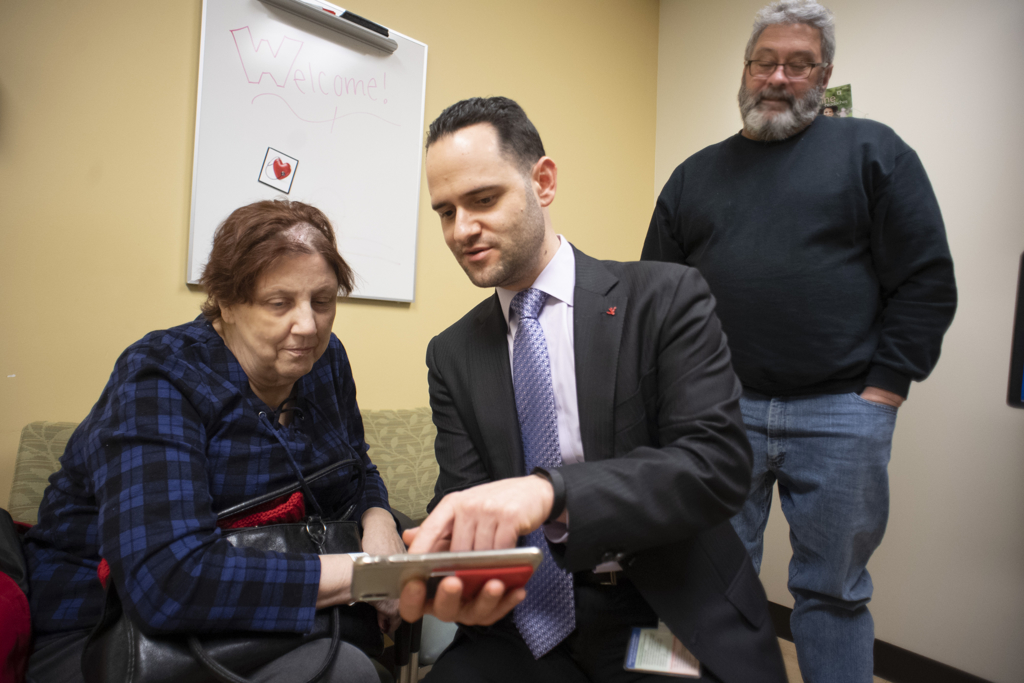
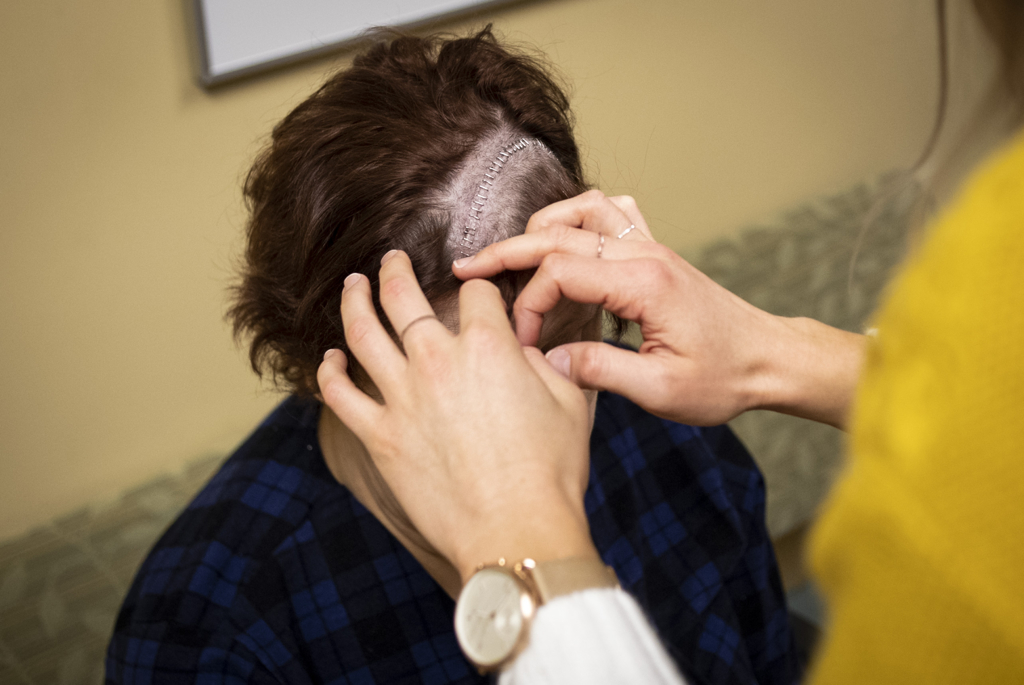
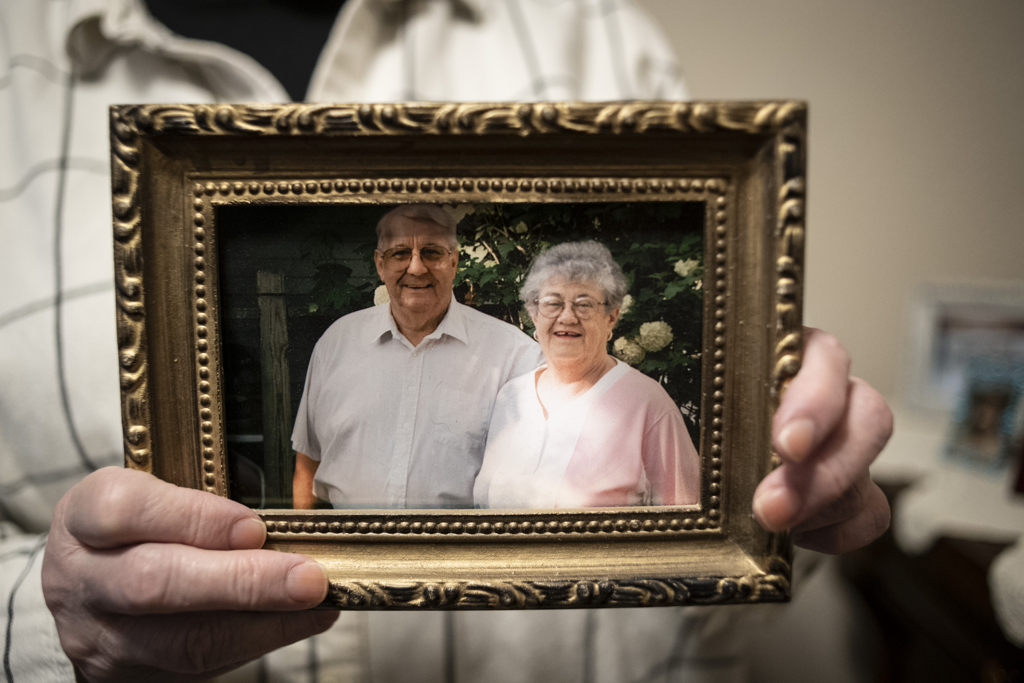

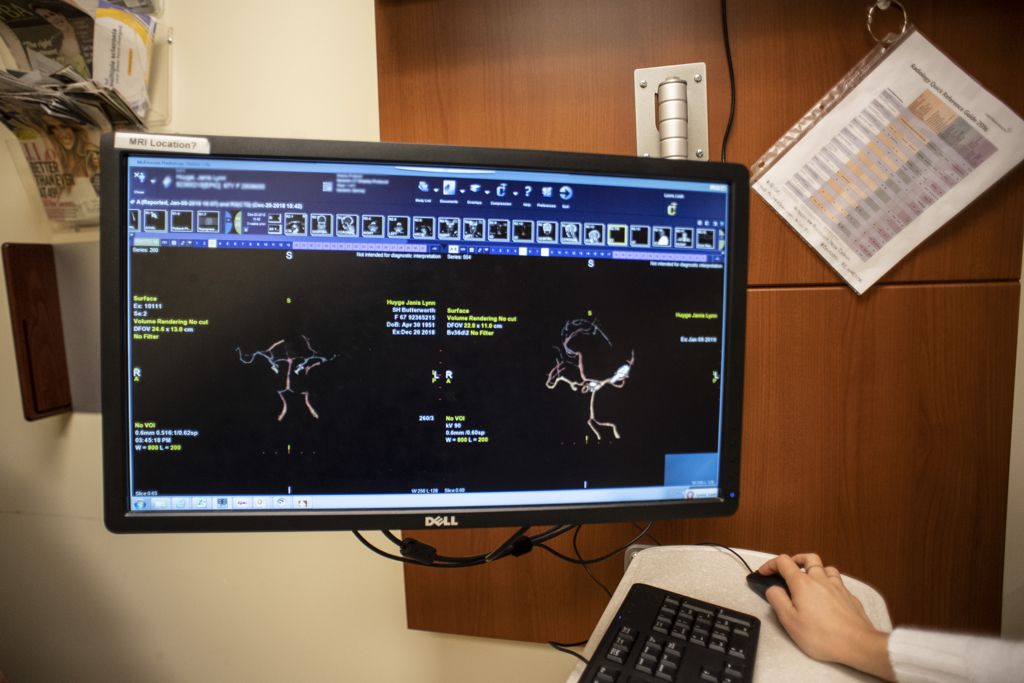

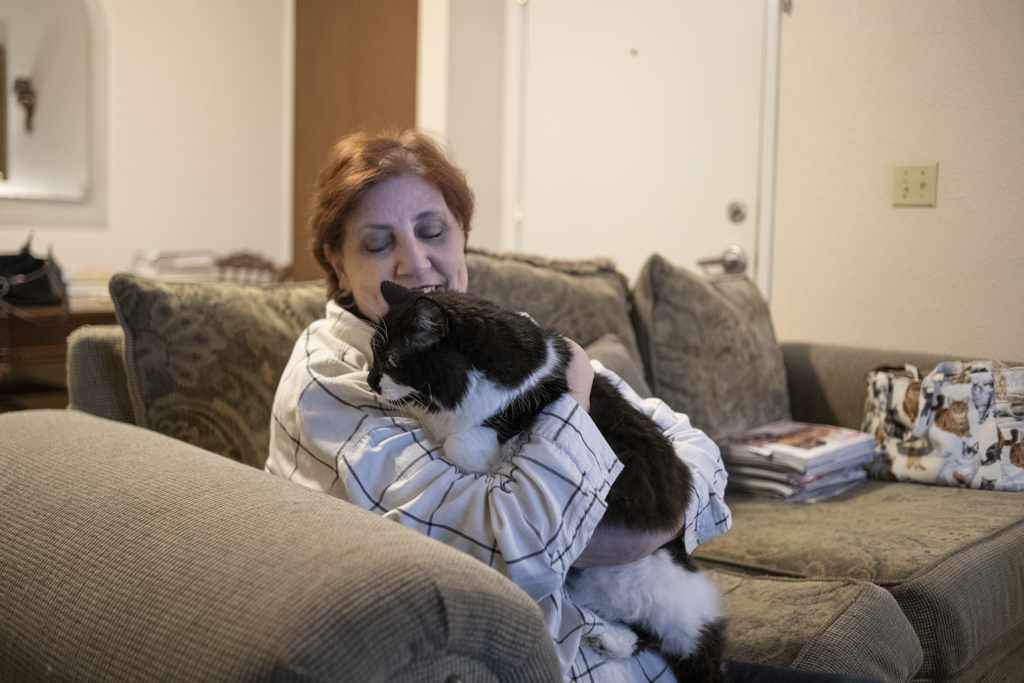
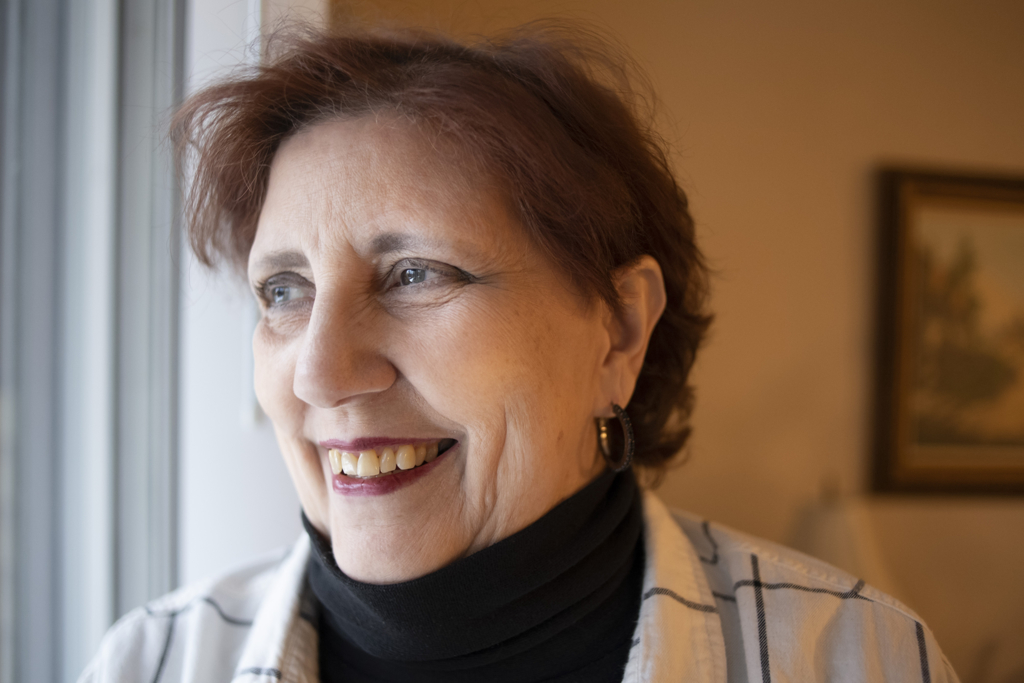





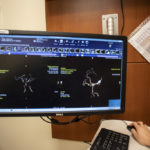
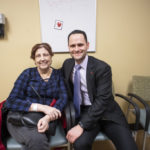


 /a>
/a>
 /a>
/a>
 /a>
/a>
Dr Singer is amazing. He removed a blood clot from my brain stem a little over a year ago. He saved my life and I am forever grateful.
Thanks, Linda, for your kind comment. So glad you’re doing well. Great to see you on Health Beat, and commenting! 🙂